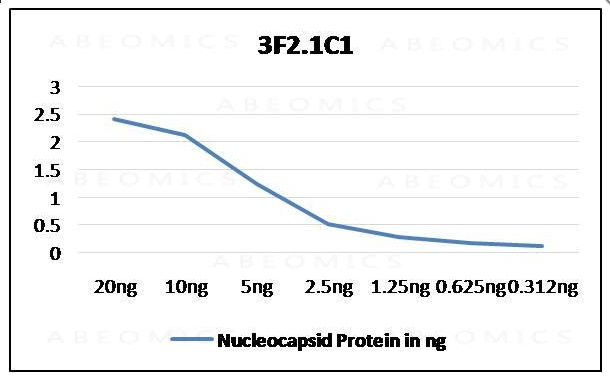Recombinant Rat C-C Motif Chemokine 5/CCL5 (N-6His)
Shipping Info:
For estimated delivery dates, please contact us at [email protected]
| Amount : | 50 µg |
| Content : | Lyophilized from a 0.2 µm filtered solution of 20mM PB, 500mM NaCl, 2mM EDTA, pH7.4. |
| Storage condition : | Lyophilized protein should be stored at -20°C, though stable at room temperature for 3 weeks. Reconstituted protein solution can be stored at 4-7°C for 2-7 days. Aliquots of reconstituted samples are stable at -20°C for 3 months. |
| AA sequence : | MNHKVHHHHHHMDDDDKSPYGSDTTPCCFAYLSLALPRAHVKEYFYTSSKCSNLAVVFVTRRNRQVCANPEKKWVQEYINYLEMS |
| Gene : | Ccl5 |
| Uniprot ID : | P50231 |
Source: E.coli.
MW :10kD.
Recombinant Rat C-C motif chemokine 5 is produced by our E.coli expression system and the target gene encoding Ser25-Ser92 is expressed with a 6His tag at the N-terminus. C-C motif chemokine 5(CCL5) is a beta-chemokine that plays a primary role in the inflammatory immune response by means of its ability to attract and activate leukocytes. CCL5 is secreted by many cell types at inflammatory sites, and it exerts a wide range of activities through the receptors CCR1, CCR3, CCR4, and CCR5. Inflammatory responses can be impaired by the sequestration of CCL5 by the cytomegalovirus protein US28. Oligomerization of CCL5 on glycosaminoglycans is required for CCR1mediated leukocyte adhesion and activation as well as CCL5Â’s interaction with the chemokine CXCL4/PF4.The deposition of CCL5 on activated vascular endothelial cells is crucial for monocyte adhesion to damaged vasculature, but CCL5 oligomerization is not required for the extravasation of adherent leukocytes.CCL5 is upregulated in breast cancer and promotes tumor progression through the attraction of proinflammatory macrophages in addition to its actions on tumor cells, stromal cells, and the vasculature.
MW :10kD.
Recombinant Rat C-C motif chemokine 5 is produced by our E.coli expression system and the target gene encoding Ser25-Ser92 is expressed with a 6His tag at the N-terminus. C-C motif chemokine 5(CCL5) is a beta-chemokine that plays a primary role in the inflammatory immune response by means of its ability to attract and activate leukocytes. CCL5 is secreted by many cell types at inflammatory sites, and it exerts a wide range of activities through the receptors CCR1, CCR3, CCR4, and CCR5. Inflammatory responses can be impaired by the sequestration of CCL5 by the cytomegalovirus protein US28. Oligomerization of CCL5 on glycosaminoglycans is required for CCR1mediated leukocyte adhesion and activation as well as CCL5Â’s interaction with the chemokine CXCL4/PF4.The deposition of CCL5 on activated vascular endothelial cells is crucial for monocyte adhesion to damaged vasculature, but CCL5 oligomerization is not required for the extravasation of adherent leukocytes.CCL5 is upregulated in breast cancer and promotes tumor progression through the attraction of proinflammatory macrophages in addition to its actions on tumor cells, stromal cells, and the vasculature.
Always centrifuge tubes before opening. Do not mix by vortex or pipetting. It is not recommended to reconstitute to a concentration less than 100 µg/ml. Dissolve the lyophilized protein in ddH2O. Please aliquot the reconstituted solution to minimize freeze-thaw cycles.
Endotoxin : Less than 0.1 ng/µg (1 IEU/µg) as determined by LAL test.
For Research Use Only. Not for use in diagnostic/therapeutics procedures.
| Subcellular location: | Secreted |
|
There are currently no product reviews
|














.png)










